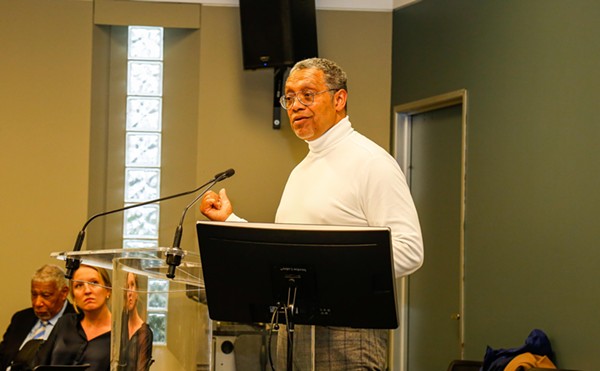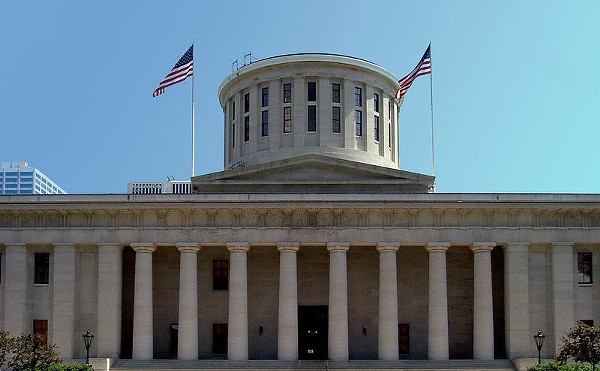REBUILDING THROUGH BOARDING
The bucolic village of Grand Rapids, just southwest of Toledo, was built up in the 1800s around the Miami and Erie Canal. The place bills itself as "the grandest of old Canal towns," and it would make a great stopover on a nostalgia-filled road trip. But it is not a particularly grand skateboarding town.
In the '80s, when Vince Frantz was growing up there, you were more likely to bump into beefy football players than punk skateboarders with weird haircuts. In the village of 2,000, Frantz and his two older brothers were the only skateboarders.
"Growing up, people just said, 'Oh, that's what those Frantz boys do.'"
But Frantz wasn't a rebel or a misfit, just an introspective artist who wasn't good at sports — that is, until he took up skating. He would watch VHS videos with his brothers of skateboarding pros from California, then teach himself tricks. "Here was something physical I could do."
Those early experiences grew into a passion for mentoring others. Although skate parks are an important aspect of the sport, there's more to skating than dropping in on a 10-foot vertical ramp and reaching for sky on the other side. Frantz and others believe skating can help kids become more confident, creative — even civically engaged.
"When you try a new skateboarding trick, you have to make a commitment and jump to the other side," Frantz says. "You start to approach life and everything that way. Because of skating, you're less embarrassed to fail in everything you do."
The Public Square Group's gospel centers around building up the local scene and convincing young people to stay. They've organized events across Cleveland and created a mobile skating truck that they bought off Craigslist for five grand. The truck, paid for with money they raised by offering lessons, pops up across the city for lessons and demos. "It's like a food truck, but instead of serving burritos, we teach skating," Frantz says.
One of those events, East Meets West, draws hundreds of skaters from throughout Northeast Ohio for a daylong competition in Slavic Village, a target neighborhood of PSG's efforts. Think of a game of horse, only spelling the word "skate," and you've got the picture. The contest originated as a friendly competition that would bring together skaters from all parts of town.
This year, East Meets West takes place on Saturday, May 26, at East 55th and Broadway, where the city will close the street and turn it into a skaters' paradise. PSG expects its biggest crowd yet; 110 skateboarders are registered, and some 500 spectators are expected. "Last year, there were so many people that there was barely enough room to skate," says Frantz.
For several years, Frantz and other skateboarders have organized lessons in Central, Slavic Village, and other low-income Cleveland neighborhoods ravaged by gang violence and foreclosures. They think they can make a difference; in some ways, they already have.
A neighborhood visit several years ago led Frantz to Ja'Ovvoni Garrison, a teenager growing up in East Cleveland with nine brothers and sisters. He started skating when one of his friends from elementary school picked up a free demo of a video game at the local Pizza Hut. After watching skating legend Rodney Mullen on the screen, he decided to try it for himself.
Yet Garrison, who is black, faced almost instant ridicule from neighborhood kids. "They told me, 'Why are you doing this? It's a white person's sport,'" he recalls. "Our neighborhood was black and white, and it was very segregated."
When the city built its first downtown skate park at North Coast Harbor, kids who had once flocked to Public Square — only to be shooed away by cops — finally had a place of their own. The diverse, inclusive scene was life-changing for Garrison, who finally felt "normal."
"The other skateboarders downtown rolled out the welcome mat, and I didn't have to worry about being ridiculed," he says. "There was a sense of community there."
Inspired by the downtown park, Garrison took up the cause for his own neighborhood. His family had recently moved to Slavic Village, a neighborhood that's gained notoriety in recent years as ground zero of the national foreclosure crisis. Today, it's is still trying to recover from the wreckage of boarded-up, vacant homes that dot the landscape.












